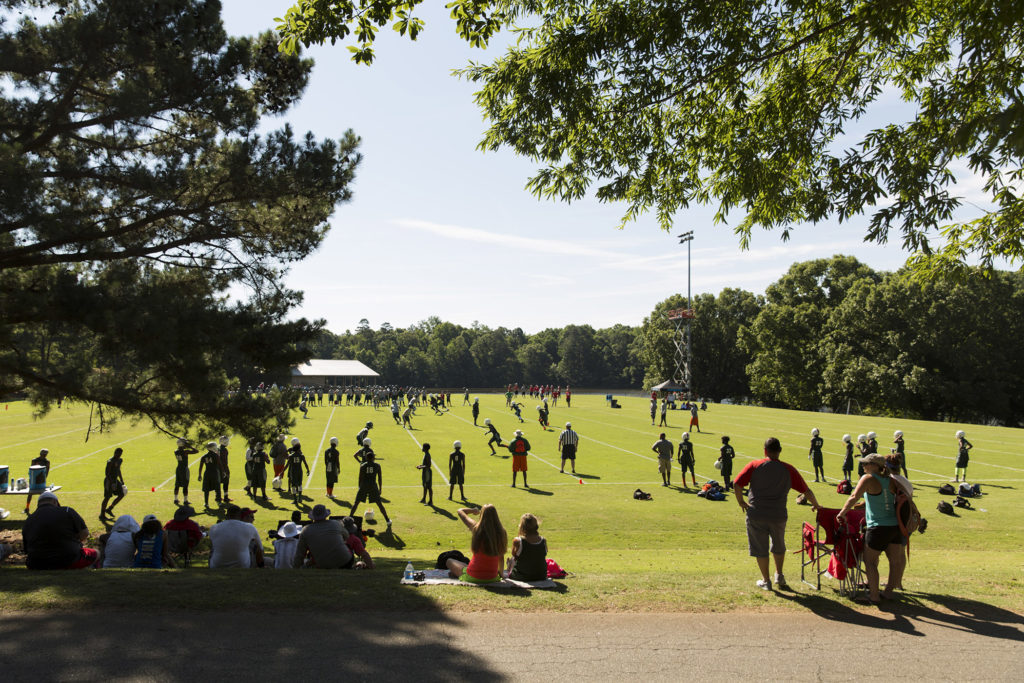Athens, Ga. – As the college football season heats up, a new University of Georgia study finds players are more likely to suffer from heat-related illness during the first two weeks of practice, especially those in the Southeast.
The four-year study evaluated the rates of exercise-related heat illness among NCAA football players at 60 colleges across the U.S. Bud Cooper, associate clinical professor in the department of kinesiology at UGA’s College of Education, said the results show the need for players to get acclimated to the environmental conditions during the first two weeks of practice-especially during hot weather.
“Environmental stress, especially hot weather, can be a key component when assessing this stress,” said Cooper, the lead author on the study. “Certain variables can be manipulated to reduce that risk.”
Intense workouts over consecutive days, along with the high temperatures of late summer, can cause a higher rate of exertional heat illness. Researchers found the greatest risk of heat illness came during the first three practices and the first three practice days. When “two-a-day” practices began at practice day six, there was an increase in heat illnesses on practice days seven and 10.
Where the practices took place also influenced the rate of illness. Athletes in the Southeast had the highest rate of exertional heat illness, averaging around three per 1,000 athlete exposures, a rate that was nearly five times higher than the ratio of athletes in the lower Midwest, which was the next highest region. In total, the study collected data over four football seasons from NCAA Division I or Division II colleges and universities, noting more than 365,000 incidents of athlete exposures and 553 cases of exertional heat illness.
“This study indicates that specific regions of the country, such as the Southeast, have a higher risk rate than others,” said Cooper. “Sports medicine professionals need to take diligent care in protecting those athletes.”
Temperature plays a key role, and researchers found that when the wet bulb globe temperature was above 82 degrees F, the incidents of heat illness jumped to six times the level compared to when it was 76 to 78 degrees. When the temperature was over 90 degrees F (which study authors called an “extreme risk”), the rate of heat stress or exhaustion was 4.12 per 1,000 athlete exposures, compared with .23 in practices below 82 degrees.
Heat-related illness has been an issue for football teams in recent years, resulting in recommendations from the NCAA and the National Athletic Trainers’ Association. Heat-related deaths among football players has risen significantly since 1975-24 deaths were reported between 1975 and 1994, but that number jumped to 42 between 1995 and 2009. In fact, the study’s authors write, “the five-year period from 2005 to 2009 included the greatest number of heat-related deaths in high school and collegiate sports for any five-year period over the previous 35 years.”
But, notes Cooper, knowing the warning signs is the first step in protecting players during the first few weeks of practice.
“Heat illness is 100 percent preventable as long as the appropriate steps are taken to ensure an occurrence does not happen,” he said. “This includes knowing past medical history, implementing proper rest and hydration breaks, modifying your practice as the weather dictates, getting proper nutrition and rest, and recognizing the signs of exertional heat illness.”
